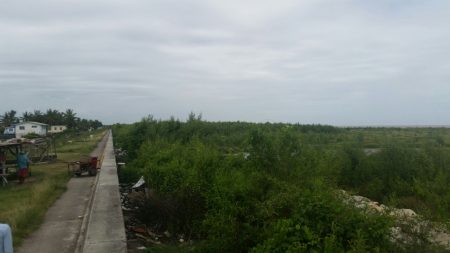Garbage dumping, harvesting and grazing of livestock are three main issues affecting the mangrove forest along the East Coast Demerara foreshore.
These issues were highlighted during a one-day workshop held by the National Agricultural Research and Extension Institute (NAREI)
A release from NAREI yesterday said that the event was attended by a total of 23 community volunteers, Neighbourhood Democratic Council (NDC) officials and mangrove rangers last Saturday at Cove and John.

Ramkarran Boodram, Deputy Chairman of the Better Hope/LBI NDC, while satisfied with the restoration of the mangroves within his NDC, said that garbage dumping within the mangroves forest continues to be a significant problem. This is particularly so within the villages of Better Hope, Vryheid’s Lust, Brothers/Montrose and Chateau Margot.
Household waste and shrimp waste are continually being dumped in these areas. The NDC is currently engaging residents on the problems.
Royston Kingston, Chairman of Haslington/ Golden Grove, one of the largest NDCs, along the East Coast, stated that his NDC is faced with similar problems and this is having a negative impact on their mangrove resources. Although, the instances have reduced, farmers continue to graze their livestock within the mangroves. Also, there have been reports of harvesting of mangroves for fishing poles, and garden poles.
Members of the East Coast Village Mangrove Action Committee, a volunteer group under NAREI, identified a number of interventions to be undertaken this year that will seek to address these issues. They include public awareness and education programmes on the importance of mangroves, targeting of youths through environmental clubs and engaging the relevant government agencies such as the Environmental Protection Agency.
Mangroves are protected under the Forestry Act and cannot be destroyed without permission from the Guyana Forestry Commission.






